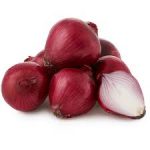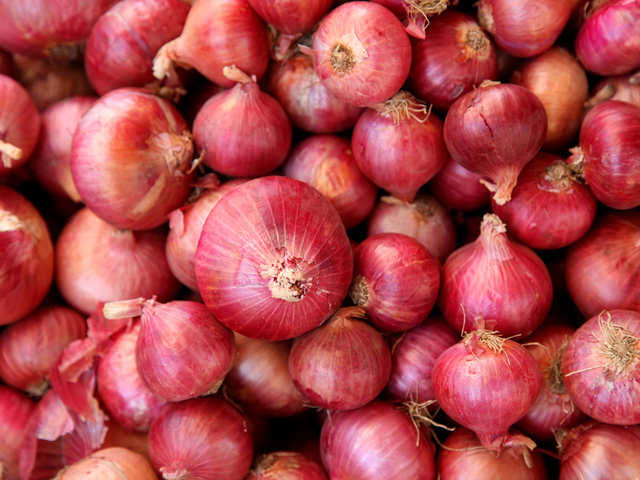Allium cepa or onion or Àlbásàà (Hausa) or àlùbọ́sà (Yoruba) or ayabasị (Igbo): Shed tears, but reap all the benefits of this wonderful plant
Occurrence and Description
Onions are perennials that are cultivated for food worldwide; there are many varieties of onions. Most onion bulbs are white, yellow or red. The green stems and leaves are hollow and can reach 1 metre in height. The plants bear small flowers that are usually white or purple. The fleshy bulb that grows below the ground is used medicinally as well as for food consumption. Onions have a distinctive flavour, smell and texture, which they add to many meals and form the initial stage in many recipes. Onion is the most commonly used vegetable in the world food preparations, especially in the tropical countries.
Nutritional value and health benefits of onions
Although, it is classified as vegetable, it has special qualities, which add to taste and flavour to food and hence it is mainly used in many countries for cuisine and culinary preparations.
Besides adding a delicious taste and flavour, onion serves as a good medicinal compound for cataract, cardiovascular disease and cancer due to its hypocholesterolemic (lowering cholesterol), thrombolitic (prevention of the formation of blood clots) and antioxidant effects. Onions are members of the lily family. Onions are distributed throughout temperate regions of the world including Europe, Asia, North America and Africa. At least 175 countries grow onions. According to Data available from United Nations Food and Agriculture Organization, the world production of onion is ~65 million tons from 3.45 million ha area.
Approximately 8% of this global onion production is traded internationally. Productivity of onion is highest in Ireland (58 tons/ha), followed by Korea Republic (57 tons/ha), USA (55.88 tons/ha), Spain (52 tons/ha), Chile (48.50 tons/ha), and Australia (49 tons/ha. Onions are low in calories (50 kcal/100 g) yet add abundant flavor to a wide variety of foods.
It is known for its nutritional value and for the utility as herbal medicine in our country. It has moderate amounts of protein, fat, fibre and good amounts of calcium, phosphorous and potassium, vitamin C and B6. Apart from onion as bulb, even the stalk is edible. The stalk contains good amount of carotene and iron. Several antioxidant compounds, mainly polyphenols, such as flavonoids and sulfur-containing compounds have been identified in onion and garlic.
Allium cepa is used in treatment of cold, allergies, toothaches, laryngitis and coughing. Homoeopaths make a tincture of onion to treat a variety of conditions including diarrhoea, facial paralysis, hay fever, hernia, laryngitis, pneumonia and trauma.
Onion has been used for healing both internally and externally. Internally, onion has been recommended to treat bronchitis, whooping, asthma and other respiratory problems. It is believed to help loosen congestion in the lungs and expand the airways.
Some tribes and clans claim that a mixture of rue (Ruta graveolens – a very bitter plant that is part of Ethiopian cuisine) and onion is used to rid the digestive system of parasites. Onion is also thought to stimulate the appetite. It is also thought to help reduce arteriosclerosis by lowering blood cholesterol levels and preventing the formation of blood clots.
Externally, fresh onion juice is used to prevent bacterial and fungal infections. It can be applied to wounds and stings on the skin, used to remove warts and even to reduce unwanted skin blemishes. Warm onion juice dropped in the ear is said to help relieve earache. During the Roman times, onions were rubbed down to firm up their muscles and used to relieve hair loss and snake bite by Roman Gladiators. There is mounting evidence that all members of the onion family have a positive effect in lowering the risk for the development of heart diseases, among others, by decreasing cholesterol levels.

Besides it nutritional and culinary values, onions play an important role as anti-carcinogen (protection against cancer) or cardioprotective (protection against heart diseases). Onions have been shown to possess antibacterial and anti-fungal properties. Volatile oil of onion has been shown to be highly effective against many dangerous gram positive bacteria, dermatophytic fungi, growth and aflatoxin production (aflatoxin B1 is produced easily in poorly stored groundnuts and is responsible for the formation of liver cancer in Sub-Saharan regions) by Aspergillus fungi genera including Aspergillus niger, Candida albicans (responsible for vaginitis = inflammation of vagina) and Fusarium oxysporium, Geotribum candidum. Welsh onion extracts have been reported to exert more inhibitory activity towards aflatoxin production than many preservatives, including sorbate and propionate Organosulphur compounds have been reported to be responsible for antibacterial effects of onion extract against oral pathogenic bacteria causing dental caries.
In addition to inhibitory effects against pathogenic bacteria, onions have been found to promote beneficial microorganisms. Onions contain fructo-oligosaccharide (FOS), prebiotics which are non-digestible ingredients fermented by bifidobacteria and lactobacilli in the body that help maintain the health of the gut and colon.
Onions contain higher amount of FOS than garlic, rye and bananas. Inflammation is the part of the body’s natural immune response to trauma. Thiosulfinates and capaenes present in onions have anti-inflammatory activities and can also cause inhibition of the immune response. Quercetin also affects immunosuppression and has been shown to create a beneficial effect in aiding renal transplantation.
Onion bulbs are among the richest sources of dietary flavonoids and contribute to a large extent to the overall intake of flavonoids. Onions are known to contain anthocyanins and the flavonoids quercetin and kaempferol. However, anthocyanin pigments, concentrated in the outer shell of red onions, are only minor constituents of the edible portion. Kaempferol, while detectable in certain onion varieties, is present in much smaller quantities than quercetin. Therefore, quercetin is the major flavonoid of interest in onions.
Mechanisms of action of onion flavoinoid include removal of dangerous free radicals (dangerous waste materials of oxygen metabolism), chelation of transition metal ions (decreasing the availability of iron that can participate in the production of free radicals and inhibition of oxidases, such as lipoxygenase, that take part in the formation of free radicals.
These are the thoughts of:
Sa’eed Halilu Bawa
Senior Lecturer (Associate Professor) at University of the West Indies, St. Augustine Campus, Trinidad.
Studied Food and Nutrition Sciences, Dietetics at Kaduna Polytechnic, Nigeria; Warsaw University of Life Sciences, Poland.
























